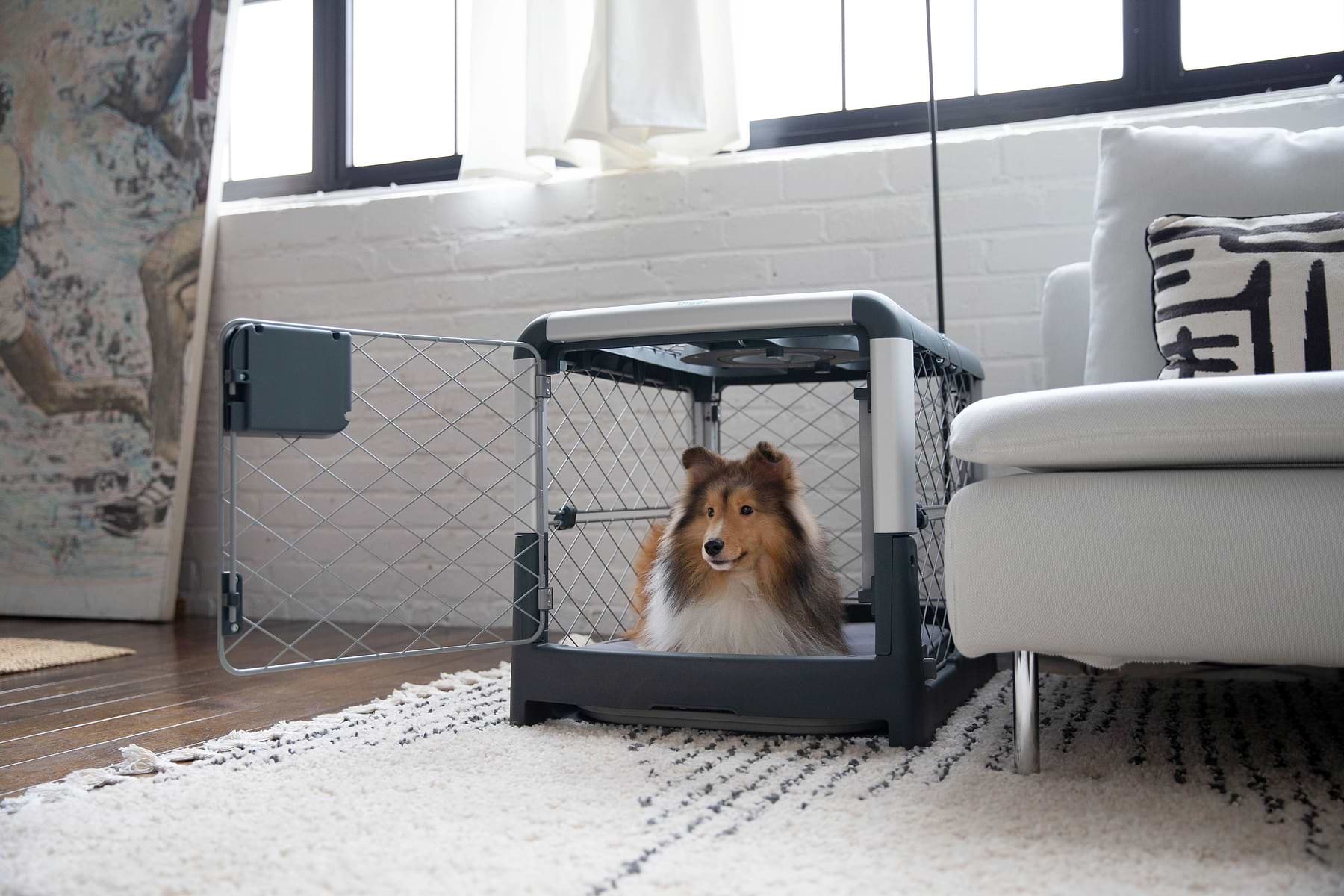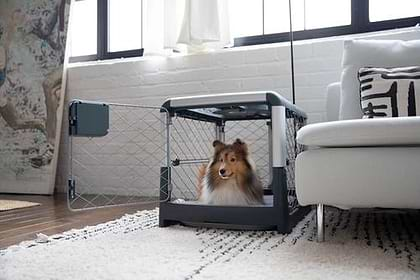
Our dogs bring us so much joy throughout the different stages of their lives. From the boisterous curiosity of puppyhood to the more confident and settled nature of adulthood, and finally to the appropriately named “golden years.” Whether you have had your dog since they were little, or you are just beginning your journey together a bit later in their lives, there are always new experiences to be had together.
If you have had your dog since they were a puppy, you may have a slight leg up in knowing their body language as well as what helps them feel the most at ease. However, that is not at all to say you are at a disadvantage if you are getting to know your dog now that they are a bit older.
If this is the case for you, you have the distinct benefit of knowing your dog in their exact current state of mind, and as a result, you can cater to their needs as they stand now. Essentially, no matter how you wound up with an older dog, there is a tremendous amount of happiness to be had, love to be shared, and growth to be enjoyed together.
When settling into a routine with your older dog, you may come to the realization that a crate would be a welcomed addition to both of your routines. For your dog, a crate could provide an increased sense of stability and ownership over their domain. Meanwhile, for you, a crate represents not only being the best possible dog parent you can be, but also an increase in flexibility that both you and your pet will be comfortable with.
Crate training your dog comes with a plethora of excellent advantages (of which we will delve deeper in a little while) that make it a worthwhile endeavor, even as your dog gets older. In this article, we will discuss seven profoundly helpful steps that will make crate training your furry friend a breeze. We will also get into some important pieces of advice to keep in mind throughout the whole process to make it as seamless as possible for everyone involved.
What Are the Benefits of Crate Training Your Dog?
While we briefly touched on just a few of the many advantages that crate training your dog can provide, there were many more that deserved to be brought up. In reality, dogs of all ages can reap ample rewards from having a crate readily available.
The benefits of providing your pet with a crate as well as adequate training can be split into two major categories: benefits for the pet parent and benefits for your dog. Of course, the lines between these two areas can become somewhat blurred. After all, if our dogs are happy, we are happy too. Still, it can be helpful to categorize the many plusses just for organizational purposes.
Benefits of Crate Training for Dogs
The advantages of crate training are often explained more from the perspective of the pet parent rather than the perspective of the dog. However, crates offer dogs a safe haven that allows them to get significantly more comfortable in your home and really let their adorable personalities shine.
Instinctively, dogs crave and will look for compact places to call their own. Not only can they see every inch of the space, but they inherently feel much more secure in an area that is all theirs and that they feel control over. In any situation where your dog feels nervous or spooked, they will know that their crate is available and will provide a comfortable location for them to remain out of the perceived harm’s way.
If you just have recently adopted your older dog from a shelter, they may take a little bit of time to fully adjust to their new surroundings. Having a crate available can make the process significantly easier and quicker, as they know they have a space all to themselves.
Benefits of Crate Training for Pet Parents
Crate training our dogs gives pet parents something very similar to what it gives our dogs: a comforting sense of security. If we know that our dogs will be happy in their crates for a certain amount of time, it gives us more freedom as we go about our day. Crate training our dogs in advance also means that if any unforeseen circumstances come up, they will enter their crates without an issue.
Can an Old Dog Learn New Tricks?
We all know the infamous saying “you can’t teach an old dog new tricks,” but this adage likely applies better to humans than it actually does to our canine companions. Older dogs are perfectly capable of learning and adapting to new ways of life, regardless of their age. In fact, it is actually likely that older dogs may be much better equipped to learn new tricks when compared to their younger counterparts, especially puppies.
This is because of puppies’ inevitable and constant energy. While we may love their cuteness and curiosity, there is no doubt that there are times a bit of restraint may do everybody some good. This reality becomes readily apparent when it comes time to train. All of this hyper energy can make focusing difficult, so actually settling down to learn can be a challenge.
Meanwhile, older dogs tend to have leveled out much more when it comes to their energy levels, so they are ready to learn and still as eager to please as ever. Thinking that older dogs are incapable of growing in this way limits them, but working together to expand their minds and build your trust with one another is always beneficial.
What Should You Look for in a Dog Crate?
You may look for slightly different attributes in a crate depending on your dog’s age, but much of what makes a crate good quality will still apply at any point in their lives. A crate should be comfortable for the dog as well as convenient for the owner. One of the very best parts about a crate is that they are mutually and equally valuable to both the pet and pet parent alike.
Diggs’ Revol Dog Crate balances the needs of both dogs and humans by offering an ergonomic, aesthetically pleasing, and cozy option. This crate has a variety of safety features that make it ideal for owners, and it is also collapsible, allowing for easy storage.
How To Make a Dog’s Crate Even More Comfortable
Older dogs may experience some aches and pains that come naturally with age, so keeping their crate as cozy as possible is crucial. The space should not only be one of mental comfort but one of physical comfort as well. Make sure to include a variety of soft surfaces within their crate like the Snooz Crate Pad, a memory foam and tear-resistant topper that will keep your dog sleeping easy.
Other than a soft pad, the inclusion of warm blankets and your dog’s favorite cuddly toys can go a long way to make the space all the more inviting.
What Are the Steps Involved in Crate Training an Older Dog?
Now that we know the basics of why crate training is so beneficial to dogs of any age as well as what to look for in a quality crate, we come to the inevitable next phase. After all of the prep work is done, it is finally time to get your dog acquainted with their new crate. This is best done through a series of steps, as nothing ever happens all at once.
Step One: Get the Crate Comfortable and Ready
Alright, maybe we were not done with absolutely all of the prep work. Now that you know what makes a crate even more inviting for your dog (a soft pad, blankets, toys, etc.), this is the step where you implement what you have learned. Make the space cozy and interesting so that your dog wants to check it out. After you have executed this step correctly, it will make the next step even simpler.
Step Two: Create Some Curiosity
Now that your dog’s new crate is as cozy and cuddly as can be, you want to up the stakes (or possibly “steaks,” in this case). Nothing will get a dog more curious than food, so place some of their favorite treats in the crate. Some of them can be out in the open, while other treats can be a bit more hidden. Keeping some of them slightly out of view will make your dog spend more time in the crate, as well as help them to be mentally stimulated while they are in there.
You can also give them their meals in the crate. The key to this step is just to create positive associations with this space, making them want to explore further.
Step Three: Let Them Investigate the Crate at Their Own Pace
Once the initial curiosity has set in, it stands to reason that the next step would be for your dog to explore their new space. Let them do this at whatever pace feels most natural to them, and never try to rush it. This will only succeed in making your dog feel less secure, and possibly associating the space with negative feelings rather than positive ones.
Eventually, your dog will inevitably begin to investigate their new space. Hopefully, they will even begin to sit down and cozy up. It is a comfortable and warm space for them to call their own, after all. What is there for them not to like? During this time, make sure to keep the door wide open so your dog will always know that they can walk in and out of the crate as they please. However, as time goes on and they get more and more comfortable, we can move on to the next step.
Step Four: Desensitize Your Dog to the Door Opening and Closing
At this point, your older dog is becoming very well acquainted with their crate. The space is warm and inviting, and perhaps they spend time there napping or just enjoying the scenery. When you feel that your pet is ready, you can slowly begin the process of desensitizing them to the door. Do not close or latch the door completely at this point. Again, we never want them to feel as if their options are being taken away.
Get them comfortable with the door at different angles of both open and shut. Let them see you handling the door so that they will understand it is nothing to be intimidated by.
Step Five: When They Are Ready, Try Closing the Door Completely
After your furry companion has gotten used to the idea of the door being more or less ajar, you can continue to close the door more and more. Soon, you can have the door be almost completely closed. This step should be done carefully, always with your pet’s comfort at the forefront of your mind. When you perceive they are ready, you can try to latch the door.
At first, only do this for very short periods of time. The idea at this point is just to get your dog comfortable with the idea of the door being shut. Repeat this process frequently, until your dog seems fully at ease with the door in various states of opened and closed.
Step Six: Increase the Period of Time Your Dog Stays in Their Crate
Now that your dog knows that a closed door is nothing to fret about, you can gradually increase how long they stay in their crate. Do this slowly and make sure to supervise them at least at first. It is not uncommon for dogs to experience separation anxiety, so know your dog and recognize what they are trying to tell you.
Eventually, as they get more and more used to staying in their crate, you can leave the room and eventually venture out even further.
Step Seven: Continue To Encourage Them
This step is less linear, and it instead will apply all throughout your dog’s journey with crates. While they will undoubtedly be significantly more comfortable with their new second home than they were at the start, positive reinforcement should become the norm. Give them treats, pet them, and talk to them in an encouraging tone. Their crate is a welcoming and inviting space, and it is up to us to keep it that way.
Advice To Keep in Mind
No matter how quickly your older dog takes to crate training, there are still some best practices to keep in mind that will always be helpful as they progress.
Have an Abundance of Their Favorite Treats at the Ready
Again, this goes back to the ever-important positive reinforcement. Crate training is all about helping your dog feel confident in their surroundings, and one of the most effective ways to accomplish that is with the use of their absolute favorite treats. Take care not to overfeed them, but this also is not the time to be particularly stingy.
Get Them Some Exercise Beforehand
Dogs are much more focused when they do not have a tremendous amount of extra energy coursing through them. While older dogs will typically have a bit less energy than younger ones, they can still be quite spritely and hyper. Take them on a nice, long walk before settling down to crate train.
Not only will this help them substantially with their ability to concentrate, but we want them to be comfortable and preferably somewhat sleepy. Getting them a good amount of exercise earlier in the day will guarantee that they are in the perfect mindset to get snoozing.
Pick Up on Your Dog’s Signals
Dogs tend to be vocal creatures who wear their hearts on their metaphorical sleeves. Get to know your furry friend and how they express happiness, distress, and any emotion in between. This will be immensely helpful when training them and assessing their comfort level.
A Cozy Home for Dogs of All Ages
Crates are a powerful tool for both dogs and humans that provide an added level of security and comfort. Remember to be patient with your older dog, and give many reassuring pets and treats along the way to make the crate training process a rewarding and bonding one.
Sources:
Crate Training Benefits: Why a Crate Is Great for You and Your Dog | American Kennel Club

The Diggs Team
We believe our dogs deserve safer, better designed pet products.
You might also like
Crate training tips, stories and inspiration
View all blogsIn Your Diggs
Share your photos with #DiggsPet and tag us @DiggsPet on IG and TikTok.


